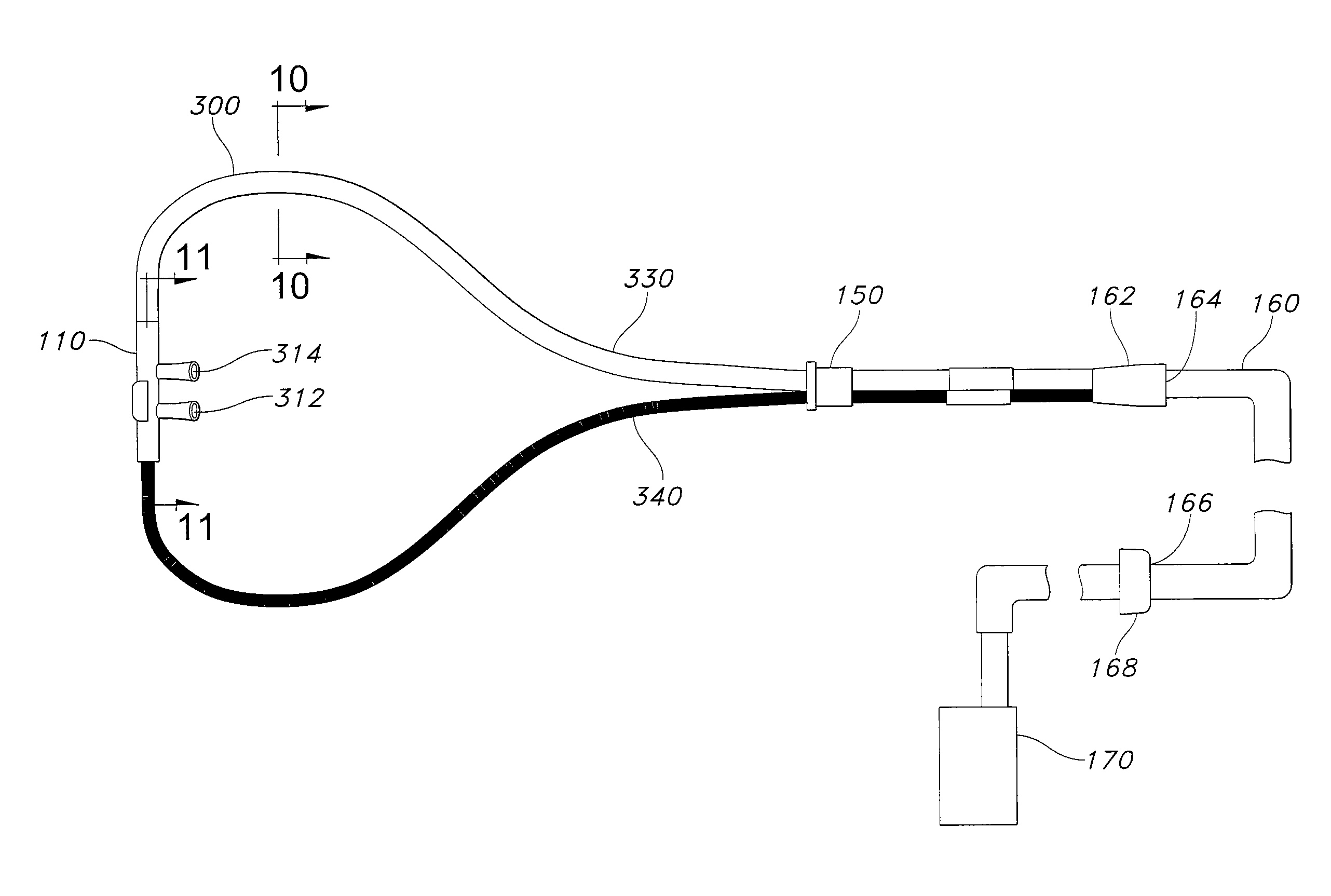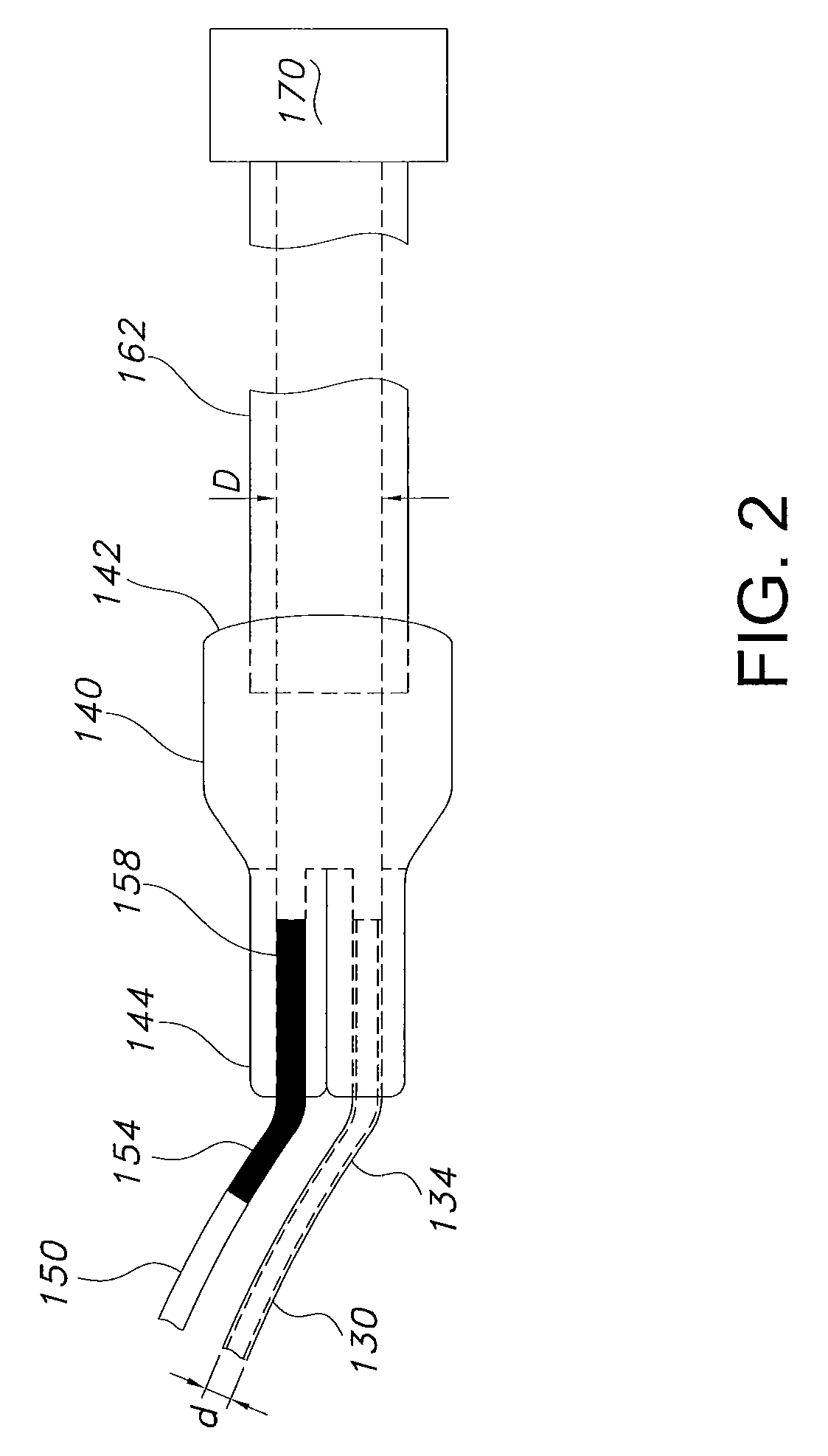Nasal cannula with reduced heat loss to reduce rainout
a technology of heat loss reduction and nasal cannula, which is applied in the direction of respirators, lighting and heating apparatus, combustion types, etc., can solve the problems of excessive condensation, respiratory irritation, and discomfort of patients, and achieve the effect of reducing the temperature gradient of the heated and humidified gas
- Summary
- Abstract
- Description
- Claims
- Application Information
AI Technical Summary
Benefits of technology
Problems solved by technology
Method used
Image
Examples
Embodiment Construction
[0032]Certain terminology is used herein for convenience only and is not to be taken as a limitation on the present invention. The terminology includes the words specifically mentioned, derivatives thereof and words of similar import. As used herein, the term “proximal” is defined to mean a direction closer to the humidification cartridge described herein and “distal” is defined to mean a direction farther from the humidification cartridge described herein. The following describes exemplary embodiments of the invention. However, it should be understood based on this disclosure, that the invention is not limited by the exemplary embodiments of the invention.
[0033]Referring to FIGS. 1-3 generally, a device in the form of a nasal cannula 100 is part of a conduit that is provided for delivering humidified breathing gas from a source of heated and humidified breathing gas to a patient. Nasal cannula 100 includes a nasal insertion member 110 that is used to deliver breathing gas to the pa...
PUM
 Login to View More
Login to View More Abstract
Description
Claims
Application Information
 Login to View More
Login to View More - R&D
- Intellectual Property
- Life Sciences
- Materials
- Tech Scout
- Unparalleled Data Quality
- Higher Quality Content
- 60% Fewer Hallucinations
Browse by: Latest US Patents, China's latest patents, Technical Efficacy Thesaurus, Application Domain, Technology Topic, Popular Technical Reports.
© 2025 PatSnap. All rights reserved.Legal|Privacy policy|Modern Slavery Act Transparency Statement|Sitemap|About US| Contact US: help@patsnap.com



